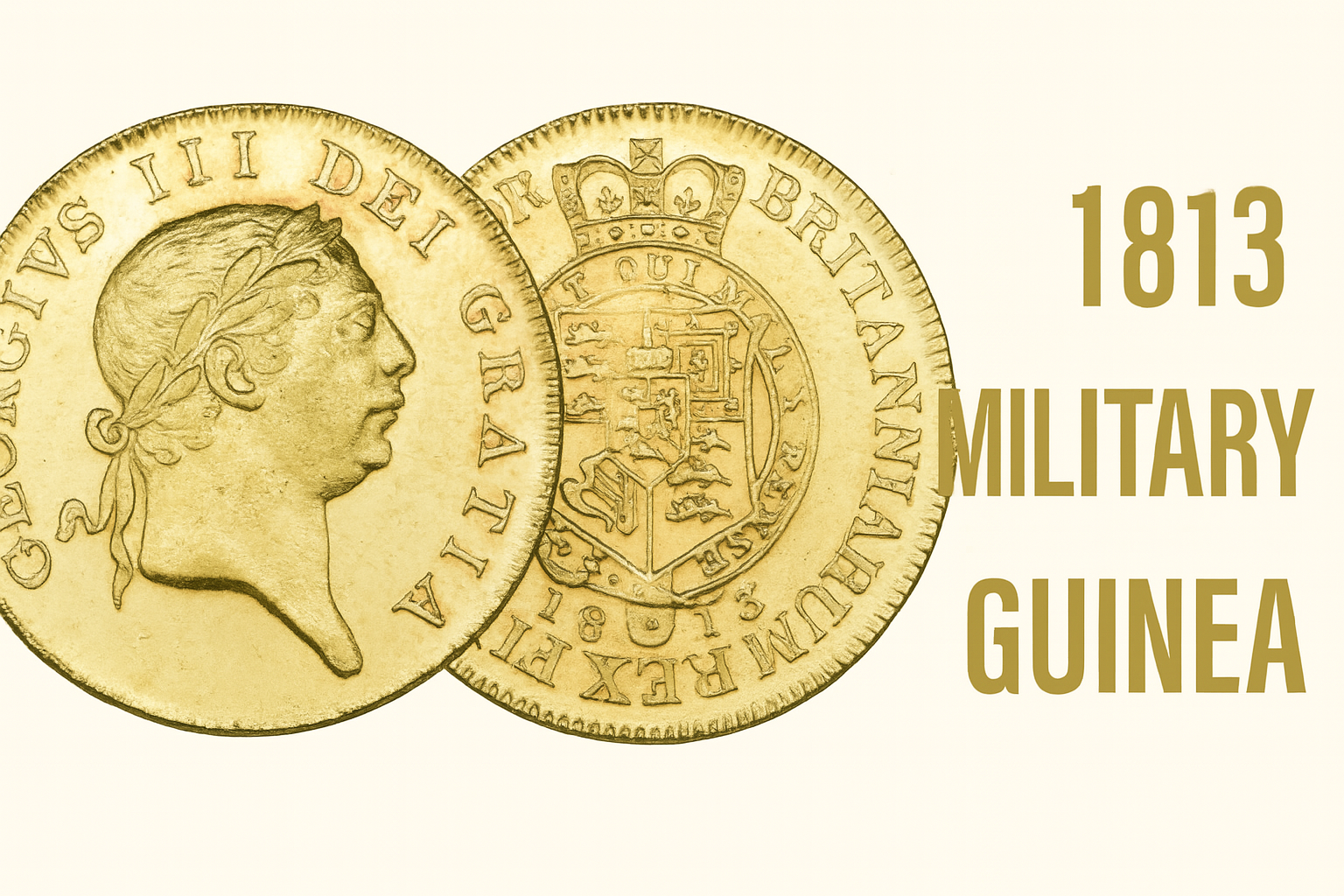The Last of Its Kind: Why the 1813 George III ‘Military’ Guinea Is a Collector’s Dream

In the world of rare coins, a few pieces stand out not just for their beauty, but for their history, scarcity, and investment potential. One such gem is the 1813 George III 'Military' Guinea — a coin that tells the final chapter of Britain’s iconic guinea denomination.
Whether you're a passionate collector, an investor diversifying with hard assets, or someone who values tangible pieces of history, this coin deserves your attention.
1. A Coin Forged for War — and History
The 1813 Military Guinea wasn't minted for ordinary commerce. It was struck during the Napoleonic Wars, specifically to fund the British Army’s campaigns in the Iberian Peninsula. Unlike earlier guineas, this one had a very practical and urgent mission: to pay soldiers and purchase supplies abroad — where only gold coins were trusted.
This special issue features:
-
Obverse: A laureate bust of King George III, styled by the renowned artist Nathaniel Marchant — his sixth and final portrait used on coinage.
-
Reverse: The royal shield of arms, crowned and encircled by the Order of the Garter's legendary motto, Honi soit qui mal y pense (“Shame be to him who thinks evil of it”).
These coins were not intended for circulation within Britain and were largely exported, making surviving examples in top condition exceedingly rare.
2. Scarcity, Prestige, and the End of an Era
Minted in London using Boulton & Watt’s revolutionary steam-powered presses, the Military Guinea was produced for just a few months in 1813 — a total of about 361,000 coins, with only ~80,000 sent directly for military use. But that was it. This coin marks the final issuance of the guinea denomination, a series that began back in 1663.
In 1816, Britain overhauled its currency system, replacing the guinea with the now-familiar sovereign. That makes the 1813 guinea not just rare, but a symbolic end to a 150-year era of British coinage.
NGC-graded Mint State (MS) examples are even scarcer. The recent auction of an MS61-graded specimen for ¥1,150,515 (approx. $7,500 USD) highlights just how coveted these coins have become.
3. Why Investors Are Taking Notice
This coin isn’t just for history buffs or monarchist enthusiasts. It's increasingly seen as a tangible hedge in uncertain times. Here’s why it appeals to high-end investors and collectors alike:
-
Hard asset with intrinsic value: Made of 22-karat gold, it contains over 7.7 grams of pure gold.
-
High demand, low supply: The 1813 Military Guinea is one of the rare few coins with both numismatic and bullion value — a key advantage in a world of inflated paper assets.
-
Historical gravitas: Few coins can claim to have played a real role in global conflict. This one did.
Comparable coins in better grades (MS62+) have fetched well over $10,000–$15,000 in international auctions. For those looking to combine history, luxury, and investment in a single item, it’s hard to beat the Military Guinea.
Final Thoughts: More Than Just a Coin
The 1813 Military Guinea is not merely an artifact — it is the embodiment of Britain’s final golden gesture during the Napoleonic Wars, the last breath of the guinea’s reign, and a masterclass in 19th-century minting artistry.
For collectors who crave rare items with authentic backstories — or investors seeking assets beyond the stock market — this coin is a timeless opportunity.
Owning an 1813 Military Guinea means holding a piece of real history… and possibly, a smart piece of your portfolio too.
Interested in acquiring one? Reach out to trusted dealers or watch for high-grade specimens in upcoming auctions. With rising demand and limited supply, these coins may not stay on the market for long.
